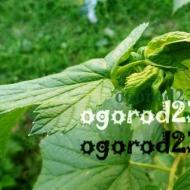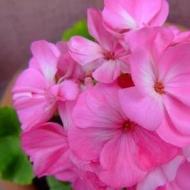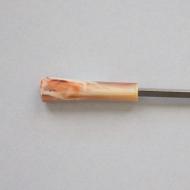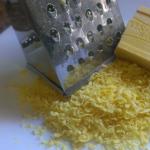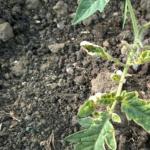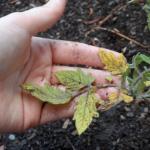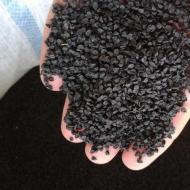
The pearl of fruit bushes is blackcurrant. All about planting, care and the best varieties
Tasty and healthy berry - blackcurrant. Growing it in the Kuban has its own characteristics, because it is not so easy to get a full-fledged blackcurrant crop here. The hot, dry climate of the Krasnodar Territory is the main reason for failures. And many just blame the dry, hot climate of the Krasnodar Territory, varieties, but not themselves. They do not want to understand the reasons for their failures. But even the place of planting seedlings greatly influences the further fate of black currants. Prevention of diseases, treatment from pests in the spring before setting berries, in the summer, in the fall after harvesting - a whole range of measures - everything must be done on time, without delay.
It is generally accepted that blackcurrant lives well, bears fruit in partial shade. Yes, in the conditions of the hot Kuban summer it is so. But it is very important at what time of day the blackcurrant is closed from direct sunlight. If the bushes are in the shade all daylight hours, then, of course, she will survive there, but will not reveal her potential.
All living things on Earth are children of the Sun! And the lack of sunlight affects the viability of plants, yields, and the quality of fruits. For some reason, many plant blackcurrants near standing trees, forgetting that the root systems of trees and shrubs will compete for food and moisture. Most often, victory is behind the trees.
So if you want to have a well-bearing currant, take it to an open sunny place away from the trees. In addition, keep in mind that trees are suppliers of pests: aphids, mites, other suckers, as well as diseases.
With our hot, dry summer, a place for currants should be chosen very carefully. The best option, in my opinion, is this. The bushes are open to the sun until noon, then shade. And the sun after 17-18 hours.
And, nevertheless, even the successful arrangement of blackcurrant bushes is not a guarantee of success. I do not consider the issues of planting, laying mineral, organic fertilizers for the future, they are repeatedly described in many publications. But according to what technology to contain blackcurrant, it is necessary to clearly define in advance.
Blackcurrant cultivation technology
The most successful, in my opinion, is the technology of German gardeners. What is its essence?
Firstly, the seedlings are planted densely. Rows in 40-70 cm - the distance depends on the strength of the bush. It will be easier to water, loosen, fight pests, diseases.
Secondly, this is perhaps the most important thing in caring for blackcurrants according to German technology - after harvesting, the fruiting stems are immediately cut out, and the young ones (replacement shoots) are normalized - they leave the strongest 3-5 shoots, the rest are also cut out.
Thirdly - enhanced care for currant bushes until winter itself - prevention from diseases and pests.
Fourthly, in the fall, after leaf fall, winter moisture-charging irrigation is carried out - 70-80 liters per 1 sq. m plantation
Why is this technology preferred over the traditional one? Let's take a closer look.
With conventional technology, the branches are preserved for 4-6 years, only then they are gradually replaced with new shoots. The crop is formed not on the main stems, but on the branches of the 2nd, 3rd order. As a rule, the annual growth of these branches is small, they are weak, their potential to produce a crop is low.
And according to German technology, flower buds are laid along the entire length of the young plants that have grown up by autumn. Next year they will have a full-fledged harvest of large berries with full tassels. This is because the bushes are well lit, ventilated, not thickened. And every year the number of replacement shoots increases, you can leave 5-7 stems, their productivity is very high - many times more than from an ordinary overgrown bush. And the main thing is the quality of the berries. Agree, when you see such results of your work, then caring for currant bushes is a pleasure.
Pests and diseases of black currant
The shoot glass box causes great damage to the currant crop: the branches dry out, break. Most often this occurs during the ripening period of the berries. The laying of eggs by the glass-case in young wood, the conditions for their development coincide with the cyclical development of blackcurrant shoots and the growth of side branches.
The bark of the branches is fresh, thin, easily pierced when laying eggs by a small butterfly with transparent wings. Then a worm successfully develops from the eggs, which feeds on the juices of the branch, descends through its core to the base of the bush, in order to pupate later, fly out again as a butterfly. Affected branches easily dry out and break.
It's hard to deal with glass. This is cutting damaged stems, side branches to the base of the bush, burning them. It is easy to find out whether the stems are affected or not: in the fall you bend a young branch - the affected one will easily break, anywhere. Do not leave in sight the seemingly good remaining part of the stem - cut out the entire stem at the base - after all, it is not known whether the pest remained there or flew out.
Only a systematic annual fight against glass helps to save currant bushes, otherwise they may all die.
If you plant new seedlings, then you need to protect them from the glass case in the first year. Starting from spring. As soon as the leaves begin to bloom, carry out the first spraying with any pesticide, for example, Vofatox, Kinmiks, Karbofos, Aktara, Rovikurt or others.
So you can protect against primary infection with ticks, aphids, and other sucking pests. Every day is precious here, you can't be late.
Write down the date of spraying, waiting period. The waiting period is indicated on the package of the drug against pests - this is the duration of the drug. The next spraying is after the end of each waiting period. Alternate medications. Do not spray with the same.
There is another recipe for dealing with glassware. It is advisable to use this tool in the spring - April, May - at this time butterflies, mosquitoes are born from pupae. So, the composition of the mixture: one tablespoon of mustard powder, ground pepper, 1 cup (200 g) of tobacco dust, 300 g of wood ash. Mix it all well. Pour 2-3 tablespoons of the mixture under each bush and loosen well, mix with the soil.
I also want to suggest a simple way to deal with aphids. You can do without spraying. It is based on the fact that female aphids are carried by garden ants. They are sure to settle them at the top of the stem, where young leaves appear, which are great for feeding young aphids.

And now attention! It is enough to pinch the top, remove 2-3 topmost leaves and ... the ant runs to the top, and the female has nowhere to attach - then he does not settle her here - he is looking for another place. But even if he managed to infect the top with aphids, the aphids will still die. After all, you removed part of the top, tender, juicy, young. You just have to do it more often.
I never spray for aphids. Ants after the "deceptive" tops no longer come a second time, they leave the entire currant.
From fungal diseases, a single spraying with copper-containing preparations is usually sufficient.
Sometimes good seedlings die from infection with infectious diseases. In this case, most often, the sap-carrying vessels of the stems do not allow food and moisture to pass through. When you pull out such a bush, you can see that the root system is alive, but underdeveloped, lagging behind similar healthy plants. Such seedlings should be burned immediately. Infected plants cannot be cured.
Reproduction of blackcurrant - what dangers lie in wait
I also want to tell gardeners who grow seedlings themselves. You probably noticed that everything was done “according to science” - cuttings were cut, they are well rooted, they are developing well. Some just don't develop well. By the end of the summer, these laggards are dying. And then, closer to autumn, they dry almost instantly, well-developed cuttings die, one might say, already seedlings.
The glass worker worked here.
Most likely, the cuttings were cut from an infected bush. Poorly developing cuttings are the result of a core already affected by a worm. And in well-developing seedlings, the cause of death, most likely, is as follows - they became infected in the spring from fruit-bearing bushes.
Cut cuttings only from healthy plants!
To plant a currant cutting, the soil should be fertilized with humus, ash should be added (with stirring). Soil reaction should be close to neutral. You can water the cuttings with water with the addition of root-forming compounds - Kornevin, (heteroauxin).
The best varieties of blackcurrant for the Kuban
The yield of currants depends not only on proper care, but also on currant varieties and their cross-pollination. Here you have to experiment, select the best varieties.
For example, I have excellent pollination of each other, they give a friendly harvest of excellent quality varieties Selechenskaya, Degtyarevskaya, the latest super variety Altai Late (he has no equal), as well as several bushes of Vigorous. As a result, on all varieties, the brushes of berries are stuffed, aligned.
 Variety Selechenskaya-2
Variety Selechenskaya-2  Variety Vigorous
Variety Vigorous That's all wisdom. Would you like to have blackcurrants every year? Take note of the features of growing, our tips.
Good luck to you, full baskets of berries!
 Y. Minin - "Niva Kuban", No. 41, 2014.
Y. Minin - "Niva Kuban", No. 41, 2014.

Blackcurrant is a winter-hardy berry crop. Frost resistance depends on the origin of the variety, the growing area and the level of agricultural technology. New varieties bred with the participation of Siberian currant and wild grouse have higher winter hardiness.
Growing temperature
At low temperatures, annual growths are most often damaged. Their buds and fruits freeze.
- During the flowering period, currants suffer greatly from low temperatures. Its vegetation begins at 6°C, in some varieties - at 2°C, the optimum temperature for growth is 18-20°C.
- In hotter weather, currant growth slows down.
In the arid southern regions, this crop suffers from heat and dry air, the amount of pulp in its berries decreases, and the skin becomes dense.
In extreme heat, blackcurrants sometimes shed their leaves.
Lighting
- Currant grows well and bears fruit with sufficient light. In a community with woody plants, its yield is reduced.
- Varieties with a compact bush shape must be thinned out in a timely manner, otherwise the crop will be only on the periphery, and in the center all fruit formations will die off.
- In the shade, black currants produce a weak crop and are more damaged by diseases and pests.
![]()
Moisture
Blackcurrant is a moisture-loving plant. This is due to the conditions of its formation in the wild along the banks of rivers, streams and in marshy forests.
The high requirement for moisture is also due to the fact that the root system of this culture does not lie deep. It is also demanding on air humidity.
Despite the fact that blackcurrant is moisture-loving, it grows poorly in areas with stagnant spring flood waters or summer heavy rains, the bushes are covered with lichens, quickly grow old, and stop growing.
Under this culture, it is necessary to allocate moisture-intensive drained areas.
![]()
Blackcurrant is demanding on nutrients, therefore it needs fertile soil rich in fertilizers. The root system of this crop lies mainly in the upper layers of the soil, but its power increases significantly with deep pre-planting cultivation of the site.
- Light soils without organic fertilizers are not suitable for this crop.
- Podzolized, saline and acidic soils are not suitable for blackcurrants.
- Clay soils are best suited for currants, but others can be used if they are well fertilized and moistened.
Blackcurrant is best cultivated in loose fertile soils with an optimal acidity of 6-6.5 pH. It reacts to fertilizers more than other berry crops.
Increasing the dose of nitrogen increases berry size and yield. With its deficiency, the leaves become smaller, the growth of shoots is delayed, small leaves become red in early August.
- Nitrogen organic fertilizer it is desirable to combine with mineral nitrogen.
- potash fertilizers also have a strong influence on the yield of blackcurrant. Potassium affects the sugar content of berries. With its deficiency, a yellow border forms in the form of a burn along the edges of the leaves. Potassium chloride can cause burns, so it is better to use potassium sulfate.
- Phosphate fertilizers are also important for this culture. With their lack, the fruits become smaller, the yield decreases, the leaves are affected by spotting. To obtain a high yield of blackcurrant, it is necessary to apply a lot of organic fertilizers in any form.
Interesting on the topic![]()
Blackcurrant is a berry shrub popular with summer residents and gardeners. It will take a little effort to grow it, but it is simply necessary to know some of the features of this plant. The full development of the crop and the amount of the harvest will depend on this.
Currant fruits are considered incredibly useful, saturated with a large number of various vitamins and substances necessary for the human body. That is why almost all gardeners grow blackcurrant bushes on their plots. Berries can be consumed fresh, frozen, dried. They can be preserved, made into juices or compotes, used as a filling for pies and as a decoration for cakes, added to berry mousses and jelly, make jam and even make wine.
Black currant belongs to the Gooseberry family and is a perennial plant that can bring abundant and high-quality crops for 10-15 years. For such a long life, the culture needs high-quality care and comfortable growing conditions. The shrub consists of branches of different ages, which are located at different heights. This arrangement of branches contributes to a long period of fruiting.
Selection of seedlings
You need to start with the choice of high-quality planting material. The overall development of the culture and the quality of the fruits will depend on this choice. Experienced gardeners recommend purchasing young blackcurrant seedlings in special nurseries. Such seedlings in most cases begin fruiting in the summer season following planting.
Choice of landing site
Currant shrubs are very fond of moist soil, so they can grow in partial shade conditions, where moisture lasts longer. The site for planting a berry crop should be with moist soil, but without drafts and strong gusts of wind.
Landing times and dates
Landing is carried out in autumn or spring, depending on the climate in the region. In warm regions, it is recommended to plant seedlings in the fall. They will have time to take root well before the onset of frost and may bear the first fruits next summer.
In areas with severe winters, spring planting is desirable. It is necessary to plant currants before the moment when the first buds begin to bloom on it.
For the full development of the culture and for convenience when caring for shrubs, planting pits should be located at a distance of at least 1.5-2 m from each other and about the same amount should be left between the rows. When planting at a closer distance, there is a possibility of a decrease in yield and a deterioration in the quality characteristics of the fruit.
In planting pits with a diameter of about 60 cm and a depth of at least 45-50 cm, you must first pour the prepared mixture - fertilizer. It contains potassium chloride (50 g), superphosphate (100 g) and humus with earth (1 large bucket). A ten-centimeter layer of soil should be poured on top of the top dressing, which will protect the root system of a young seedling from burns.
Top dressings and fertilizers
As a top dressing for seedlings, another version of the mixture can be poured into the planting holes. It contains wood ash (250 milliliters), 2 equal parts of earth and humus.
Landing method
It is very important to lay currant seedlings in a hole not vertically, but with a slight slope and deepen by about 5-6 cm.
How to care for young seedlings
Immediately after planting, it is necessary to carry out abundant watering and mulching of the soil with humus or a small layer of river sand. It is also recommended to carry out the first and very important pruning of buds on seedlings for further growth and development. Only 4-5 buds should remain on each shoot, the rest are removed.
Watering
The volume and frequency of irrigation depends on many factors: climatic and weather conditions, the composition and level of soil moisture in the area, as well as the stage of development of the crop. Abundant watering is necessary for blackcurrants during the period of active growth of shoots, during the formation of the ovary, at the stage of fruit ripening and after harvesting. It is also recommended to water the shrubs abundantly during the dry summer months and in regions with a dry and hot climate and rare rainfall.
Soil loosening
This important blackcurrant care rule must be performed regularly, from early spring to late autumn at least once a month. Loosening is carried out shallow.
pruning
It is recommended to prune weak and poorly developed shoots in the second year after planting (during the spring months) and excess shoots in the third year after planting seedlings. After the third pruning, only the strongest branches in the amount of no more than five pieces should remain on the shrub. In each subsequent season, this procedure is already necessary only as a sanitization and to rejuvenate the culture. Pruning is carried out before the opening of the kidneys. It is recommended to remove small shoots, as well as damaged, dried and secondary shoots.
Blackcurrant is a berry crop that is susceptible to diseases and pests. The gardener needs to take preventive measures in a timely manner, as well as not to miss the moment of the appearance of harmful insects or disease and rid the plants of them.
The most common currant pests are bud mites and glass bugs, and of the frequently occurring diseases are white spot, anthracnose and goblet rust.
A tick is a pest that settles inside the kidney and feeds on the contents of the plant without leaving it. That is why it is very difficult to detect it with the naked eye. Experienced gardeners determine the appearance of a currant mite by the condition and size of the kidney. Long before its opening, it significantly increases in size, which is a confirmation of the presence of a pest in it. The most important thing to do is to urgently remove all such buds, and spray blackcurrant bushes (all without exception) with special solutions. A 10% solution of karbofos, as well as garlic or tobacco infusion, will perfectly cope with this pest.
The presence of currant glass can be seen by the delay in the flowering period on individual shoots. They must be removed already in early spring, and all shrubs should be treated with ash infusion or wormwood infusion.
White spot can damage not only leaves, but often spreads to fruits. A solution with copper sulphate, which is sprayed on all plants, will help save the crops. Signs of this disease are brownish small spots (about 2-3 cm in diameter), which gradually turn white in their central part.
Anthracnose is a disease of the leaf part of currant bushes. Small spots - tubercles with a brown tint can infect a large number of leaves in a short time. It is recommended to spray with a solution based on copper sulphate not only diseased berry crops, but all currant plantations, as well as soil areas around them.
Rolled rust often appears in the vicinity of currant sedge on the site. You can defeat this fungal disease by removing infected leaves that need to be burned, and treating plants with fungicides.
With proper care, blackcurrant will fully develop for many years and bring a large number of tasty and healthy berries.
Blackcurrant care: loosening, top dressing, pruning, mulching, cuttings (video)



